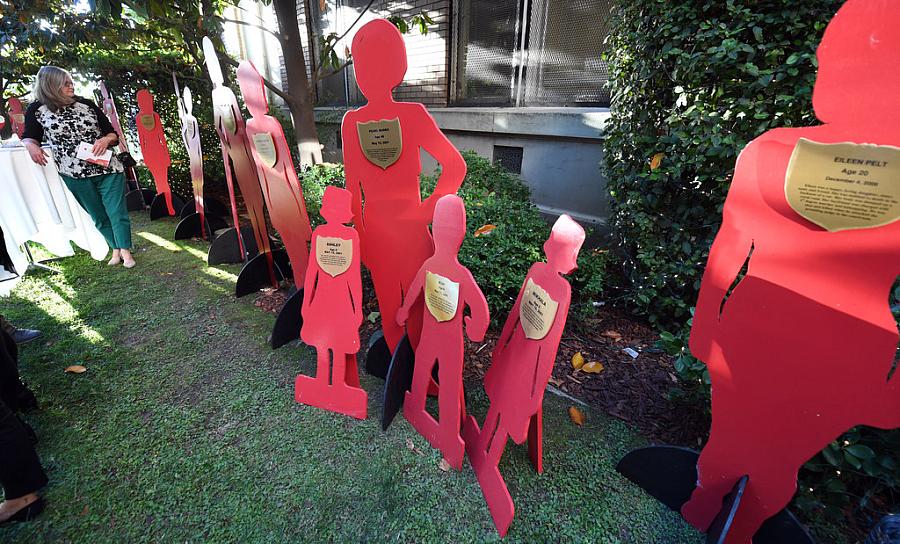What’s driving San Joaquin County’s alarming rate of domestic violence?

(Photo: Calixtro Romias/The Record)
Shontelle Bonner was affectionately known to friends and family as Shanny Poohlooh, the devoted mom of six who couldn’t go anywhere without her children.
On Sept. 5, 2017, people who never met her learned her name. Bonner, an East Bay area resident, had been found dead by Stockton police a day before. She was the second woman in as many months that authorities would classify as victims of domestic violence.
Intimate partner violence makes up one-fifth of the San Joaquin County District Attorney’s Office caseload, yet it remains a topic shrouded in silence in our community. It often goes unreported until there is a death or serious injury.
In 2016, San Joaquin County saw a higher rate of domestic violence calls for assistance than the rest of the state, according to the county’s Community Health Assessment.
While I have covered several awareness campaigns, events and criminal proceedings involving domestic violence, I have not looked deeper into this issue and why San Joaquin County’s rate is higher than the state average.
Advocates have underscored that a key component to tackling the issue of domestic violence is to develop intervention and outreach efforts tailored to specific community groups. Since San Joaquin County is 40 percent Latino, 34 percent white, 15 percent Asian and 7 percent African-American, I want to look at whether local organizations and authorities are taking into account cultural and ethnic differences.
Authorities said they have data available on where and from whom calls involving domestic violence are coming from, and I want to use that information to better understand what populations are at greater risk.
During the course of this project for the 2019 California Fellowship, I also plan to focus on exploring how alcohol and drug use affect the issue of intimate partner violence, as well as the generational toll of domestic violence.
Bonner’s relatives described a tumultuous relationship between the couple, who had been together for six years. They said her boyfriend, Clarence Bailey, had choked her out previously, and threatened to kill her and her kids. And family member’s say that alcohol use may have been involved the day of her death.
According to a San Joaquin County health survey, 90 percent of people who experience intimate partner violence have substance abuse problems.
Officers with the Stockton Police Department said they have noticed that most people involved in domestic violence issues have a substance abuse problem, which further compounds the issue.
What does help and outreach look like to a person who is struggling with substance abuse and violence at home? I want to hear from survivors who have or are affected by these issues to learn what safety nets are available to them, or where improvements can be made. I also want to learn whether trauma-informed care or other forms of counseling are available for survivors who have learned to use substances to cope.
As part of the project, I want to create a safe space for people who are affected by domestic violence to share their unaltered experience in an audio format. I’m proposing to keep these recordings as raw and unedited as possible to allow survivors to have a voice.
Many times, in crafting stories, the experiences of people caught in the cycle of abuse get diluted, but this format can allow people to more accurately recount the damage left in the wake of domestic violence. This project can help include more voices and encapsulate just how many people in San Joaquin County are impacted.

